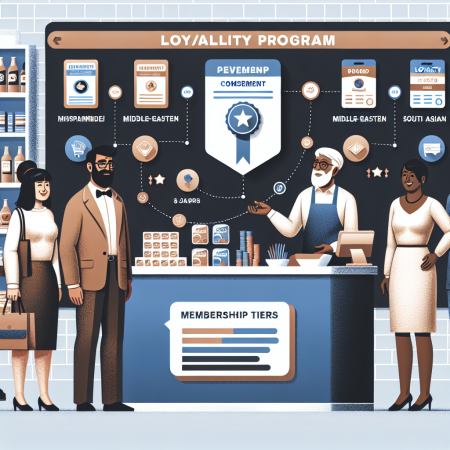How to Create a Small Business Loyalty Program
Section 1
In order to create a successful small business loyalty program, it’s essential to first understand your target audience. Take the time to analyze your customer base to determine their preferences, shopping habits, and behaviors. By gaining insights into your customers, you can tailor your loyalty program to meet their needs and expectations, increasing the likelihood of participation and engagement.
Next, define clear and achievable objectives for your loyalty program. Whether you aim to increase customer retention, boost average order value, or drive repeat purchases, setting specific goals will help guide the design and implementation of your program. Make sure your objectives are measurable so that you can track the success of your loyalty program over time.
Subsection 1.1
When designing your loyalty program, consider the type of rewards that will resonate most with your target audience. Whether it’s exclusive discounts, free products, or access to VIP events, choose rewards that provide tangible value to your customers and incentivize them to participate in the program. It’s also important to offer a variety of rewards to cater to different customer preferences and motivations.
Communication is key to the success of your loyalty program. Clearly communicate the benefits of joining the program and how customers can earn and redeem rewards. Use multiple channels, such as email, social media, and in-store signage, to keep customers informed and engaged with the program. Regularly remind customers of their progress and reward them for their loyalty to keep them actively participating.
Subsection 1.2</hsub
Implementing a user-friendly and intuitive loyalty program software can streamline the management of your program and enhance the overall customer experience. Choose a platform that allows you to easily enroll customers, track their activity, and reward them for their loyalty. Consider features such as mobile compatibility, automated reward distribution, and personalized offers to make your program more convenient and engaging for customers.
Monitoring and analyzing the performance of your loyalty program is essential for its long-term success. Regularly review key metrics, such as customer retention rates, redemption rates, and ROI, to identify areas for improvement and optimization. Use customer feedback and data insights to refine your program and ensure it continues to drive value for both your business and your customers.
Subsection 1.3
Rewarding customer advocacy and referrals can help you expand your customer base and increase brand awareness. Encourage loyal customers to refer their friends and family to your business by offering incentives for successful referrals. Implement a referral program that rewards both the referrer and the new customer, creating a win-win scenario that drives customer acquisition and loyalty simultaneously.
Building a sense of exclusivity and community among your loyalty program members can foster deeper connections with your brand. Offer exclusive benefits, such as early access to sales, special events, or personalized experiences, to make members feel appreciated and valued. By creating a sense of belonging and recognition, you can strengthen customer loyalty and encourage long-term engagement with your business.
Subsection 1.4
Regularly evaluate and optimize your loyalty program to ensure it remains relevant and effective in meeting your business objectives. Seek feedback from customers on their experience with the program and make adjustments based on their suggestions and preferences. Stay informed about industry trends and best practices to incorporate new ideas and features into your program, keeping it competitive and engaging in the long run.
Collaborating with other businesses or partners to offer joint loyalty programs can expand your reach and provide added value to your customers. Join forces with complementary brands to create cross-promotional offers and rewards that benefit both sets of customers. By leveraging partnerships, you can increase the appeal of your loyalty program and attract new customers who may be interested in the combined offerings.
Section 2
When launching a small business loyalty program, it’s crucial to define the target audience and their preferences to ensure the program’s relevance and effectiveness. By understanding your customers’ needs and motivations, you can tailor your loyalty program to meet their expectations and drive engagement. Additionally, consider segmenting your customer base to create personalized offers and rewards that cater to different customer profiles and behaviors.
Setting clear and achievable goals for your loyalty program is essential for measuring its success and impact on your business. Whether you aim to increase customer retention, drive repeat purchases, or boost average order value, defining specific objectives will guide the design and implementation of your program. Make sure your goals are realistic and aligned with your overall business strategy to maximize the benefits of your loyalty program.
Related Content
- How To Discover and Target Your Ideal Market with Google Analytics
- Tap into the remote workforce explosion by offering virtual coaching packages in 2025
- How to Use Social Media Marketing to Build Your Email List
- Reinvent accountability programs to keep clients motivated in the fast-paced 2025 world
- How to Use Newsletters to Transform Your Business

